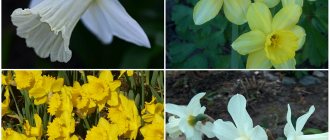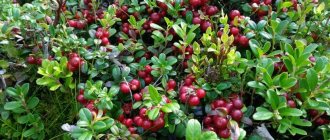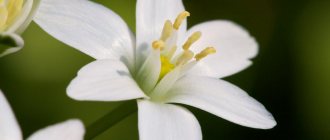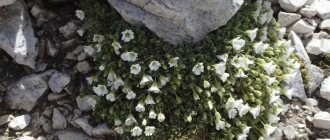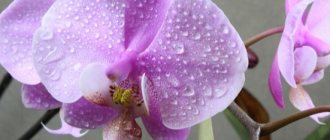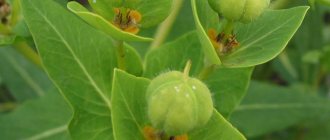Sedum is a very unpretentious perennial plant, varied in texture and color palette, which can easily find its place in absolutely any plant composition. During the flowering period, sedum reaches a diameter of up to 15 cm and a height of up to 80 cm, and the inflorescences of the plant can be colored pink, purple and lilac.
Dense plantings are planted in city flower beds with the aim of creating magnificent velvet paintings, playing with a huge variety of shades and distinguished by their softness and “fluffiness”. The overall picture is created not only by the flowers, but also by the leaves of the plant, which tightly cover the stem and impart juiciness and freshness due to their fleshiness and green color.
Briefly about care
- Watering. Sedum succulent does not like frequent watering. It is necessary to water it only after the outer layer of soil has completely dried. However, the soil should not be allowed to dry out completely, otherwise the flower will wither.
- Illumination. The flower needs abundant sunlight. Some plant varieties can grow in the shade of other plants. But it’s better not to shade the sedum with anything.
- Air humidity. The perennial loves dry air, so it is not necessary to spray the flower. If the sheet plates are heavily soiled, you can remove the dirt with a damp cloth.
- Features of winter care. A mature plant will feel comfortable being under snow cover. Young specimens need to be covered with spruce or fallen leaves for the winter. Agrofibre can also be used for shelter.
- Bloom. Flowering time occurs in May or early summer. Flowering lasts until the first frost.
- Loosening and weeding. As necessary, it is necessary to loosen the soil next to the sedum and weed out the weeds.
- Pruning and replanting. After the plant has finished blooming, it is necessary to trim off the faded flower stalks to rejuvenate the flower. The shrub does not require frequent, annual replanting. It is enough to replant the succulent once every five years.
- Soil and fertilizers. Components included in the soil: sand, compost, humus. The succulent is not used to frequent feeding. It is enough to feed the plant several times a year using special fertilizers.
- Reproduction. It is carried out by dividing the bush, seeds and cuttings.
- Diseases and parasites. The plant can be harmed by root rot and fungal diseases, as well as insects: aphids, weevils, thrips.
Key points in caring for the Ochitnik succulent
The Sedum Vidniy flower is unpretentious, so it is easy to care for. But there are still a few important points to consider.
Hydration
Watering should be carried out immediately after rooting of crops so that the plant adapts. In the future, humidification is carried out only during periods of extreme heat or drought.
Succulent Information
Amazing succulent Aeonium: features of the genus
Crassula or Crassula: features of the genus Crassula
Features of the Agave succulent genus and how to grow them
Fertilizer
Feeding is not an unnecessary procedure for Sedums. Thanks to nutrients, you can get a longer flowering period. For such purposes, fertilizer is applied 2 times per season; it is recommended to use an organic and mineral substrate. The feeding process is carried out at the time of active growth, as well as before flowering of succulents. Remember that an excess of nutrients has a detrimental effect on the earth. You need to be especially careful with nitrogen substances; exaggerating their dose can lead to rapid growth and loss of decorativeness. “Overfed” bushes withstand the winter season worse.
Weeding
This is an important process when caring for crops. The fact is that the plant does not withstand the proximity to weeds quite well, because of this it may not bloom.
Transfer
In one area, the plant develops well up to 5 years, after which it needs replanting or “rejuvenation”.
The bush will need to be dug up and divided so that there is a growth point on each part of the root system. The sections will need to be treated with an antifungal compound and left in the shade for 3 hours. Afterwards, plant the cuttings in refreshed soil, leaving a distance of 35 centimeters between the bushes. It is best to do such manipulations in the spring.
Trimming
Another important process is pruning. To obtain a beautiful bush, green shoots that grow strongly must be removed. To extend the flowering period, you will need to remove flower stalks that have already bloomed.
An additional concern for gardeners will be limiting the growth of the crop, since Sedum Vidniy quickly grows roots, which causes some inconvenience. Fresh shoots must be removed, and the boundaries of crop growth are indicated by buried plates of slate or stones.
Description of the plant
All varieties of sedums or sedums belong to Crassula plants. The habitat of the sedum is varied; it can be found in mountainous areas, in forests, and at the edge of the forest. There are a lot of varieties of sedum, some varieties were bred by selectors.
There are types of succulents that can be grown at home, one of them is sedum or Morgan's sedum, and there are species and varieties that are cultivated only in open ground: prominent sedum, caustic sedum, white sedum, common sedum and others.
Morgana sedum
People call the succulent differently: squeaky grass, sedum hare cabbage, hernia grass, young, life-giving flower. The flower was nicknamed the creaking flower because the perennial leaves make a creaking sound in the wind. There is also a version that sedum was called the squeaky grass because of its medicinal properties. Sedum is used to treat sore joints that squeak when moving. The succulent is called hare cabbage because hares are not averse to eating the sour leaves.
Interesting fact! Some varieties of succulent are quite edible; you can cook cabbage soup or make a nutritious salad from the leaves.
Sedum is a beautiful plant with lush flowering. If you look at the sedum itself or a photo of flowers in a flowerbed, you can see that the succulent has inflorescences consisting of pink flowers, as well as yellow or cream ones, depending on the variety. (See photo below)
The plant reaches a height of 50 cm and even more, some varieties exceed 80 cm.
Types of sedums for alpine slides in the garden
An adult plant is distinguished by a powerful root system that can absorb and retain moisture. Thanks to its strong rhizome, sedum is able to grow on poor, sandy and rocky soils.
The succulent has long, erect stems. The leaves of the plant are fleshy and thick, having a predominantly oval shape. The succulent is characterized by green or gray-green leaves.
The flowering period can begin in late spring or early summer and lasts until September–November. The color of the inflorescences directly depends on the variety of succulent.
The garden perennial flower sedum is an unpretentious plant. Growing sedum is easy, you just need to follow some rules when planting and caring for sedum in open ground. The main aspects when growing a plant are suitable soil, a well-lit place and timely watering. Sedum looks great in landscape design.
Types of garden sedums
There are a lot of different sedums decorating gardens. There are many garden varieties, and there are cultural and natural hybrids. If it is not possible to determine exactly what is growing in the flower garden, but it looks like a sedum, then this is not a problem - the rules of care are simple and approximately the same for all species.
White sedum (Sedum album) is a perennial succulent plant that forms dense cushion-shaped clumps up to 5-7 cm high, from small succulent leaves and stems that quickly grow in all directions. By autumn, the leaves acquire a beautiful pinkish tint. The bases of the stems spread along the ground. The flowers are small and white. In nature, it often grows in crevices or on rocky soils. Tolerates drought and winter frosts well.
False sedum (Sedum spurium), also called Caucasian sedum, is found in its natural form in the North Caucasus. As it grows, it forms a low, loose mat covered with pink flowers. After frosty winter days, its green leaves change color, acquiring a red or bronze color.
acre - grows in dry places on sandy soil, dry glades, forest edges, wastelands, embankments, limestone outcrops, rocky slopes. Distributed in Europe, Ciscaucasia and Western Siberia. The shoots of the first year are short, strewn with many leaves, forming dense curtains. There are no flowers on this plant. In the second year of life, the sedum becomes much taller, the leaves become smaller in size, and their number also decreases. At the beginning of summer, the plant is covered with numerous yellow flowers.
Kamchatka sedum (Sedum kamtschaticum) is a perennial herbaceous plant with erect or slightly lodging shoots, forming a dense carpet of soil up to 15-20 cm high. The leaves are dark green, alternate, oblong, jagged along the edge. Leaves and stems die off during the winter; at the end of April, shoots grow from underground renewal buds. Blooms profusely in June with yellow flowers collected in apical corymbose inflorescences.
Spanish sedum (Sedum hispanicum) is an evergreen perennial plant with a thin, branched, creeping rhizome. The stems of sedum are juicy, fleshy, densely covered with oblong, small, fleshy leaves of bluish-green color with pink tips. In the sun the pinkish color is more pronounced, in the shade the leaves are green. The flowers are six-petalled, the petals are white with a pink stripe in the middle.
Sedum rupestre (Sedum rupestre) is an evergreen perennial plant with a thin, branched, creeping rhizome. The stems of sedum are juicy, fleshy, densely covered with oblong, small, fleshy leaves. A fast-growing variety, it blooms in the first year and quickly reproduces by division. In adulthood, this plant is 20 - 25 cm in height. The leaves of sedum are oblong, awl-shaped, and bluish in color. Similar to needles, densely located on creeping shoots. It blooms annually with profusely bright yellow flowers collected in tall shield-shaped inflorescences.
Sedum (Hylotelephium spectabile) is a very popular plant; it grows everywhere in gardens. The plant grows from 25 to 65 cm. The stems are fleshy and straight. The leaves and stems are light green, have a bluish or burgundy tint, and are oval in shape with a wavy edge. The root is tuberous and grows quickly. The flowers are small, collected in large inflorescences, similar to an umbrella. The color of the inflorescences is pink, crimson. Flowering from July until the first frost. Cut stems with flowers last a long time in a vase, up to 1.5-2 months, with frequent changes of water and pruning of the stem. They are dried and made into ikebana. There are many garden varieties.
Evers' sedum (Hylotelephium ewersii) is a deciduous creeping perennial with erect stems. Young stems of Sedum evers are red-brown in color; by winter they turn gray-brown and become woody. It grows well and quickly, forming rather dense bluish-green clumps, which in the second half of summer are covered with bright pink flowers.
Multi-stemmed sedum (Hylotelephium pluricaule), grows very slowly. Bushes no more than 10 cm high, form mats, with greenish leaves turning pink in the sun. The flowers can be bright pink or pure white. Flowering time occurs at the end of summer, beginning of autumn.
Watering
You need to water the plant when the outer layer of soil dries out. In hot weather, watering should not be frequent: approximately once every ten days. Frequent and heavy watering can lead to root and leaf rot of the succulent. However, the soil mixture should not be allowed to dry out completely. Moisture deficiency can have a negative effect on sedum. The leaves will begin to turn yellow, dry out and wither.
During the dormant period, garden perennials do not need to be watered. Indoor sedum also does not need to be watered frequently, especially in winter. At home, you need to water the plant with water at room temperature. It is better to use settled or filtered water.
Illumination
The evergreen perennial loves bright sunlight. Therefore, before planting, you need to choose a well-lit area of soil. Some varieties of sedum do not tolerate shade and may wither if there is a lack of natural light. A sick flower will stretch upward and will not bloom. Some perennial varieties are able to grow and bloom safely in partial shade. But it’s better not to take risks and not shade the succulent with anything.
Growers who grow sedum at home use artificial lighting in the form of fluorescent light bulbs in winter so that the flower does not experience a lack of light. At any time of the year, a flower pot must be placed on a windowsill facing the south side of the windows.
What soil is suitable for sedum? How to grow sedum in open ground?
Sedum is not particularly picky about soil conditions, with the only exception being excessively wet and swampy soils. This species will feel best in soil with a significant sand content and a small amount of feeding mixtures.
Almost all representatives love a lot of light and sun, so you should not place them under trees or in the shade. You should pay attention to the variety, which is called sedum shoot-bearing - it does not like direct exposure to the sun, and will feel more comfortable in diffused light. And sedums prominent and three-leaved can exist both in the shade and in the sun. But with more light they feel better and look more flattering. It is better to place all other species in an open, sunny area, because under other conditions they fade and stop blooming.
All sedums love dry soil and are not afraid of droughts.
Most of them are perennial plants, and the recommended life time in one place without transplanting is about five years. It is best to plant sedums away from trees.
If you want to plant sedum on your site, you need to do this during the warm period of the year; usually the favorable period lasts from mid-May to October. Sedum is very sensitive to stagnation of water in the soil, so before planting, make sure that the soil is sandy enough or prepare a substrate specifically for sedum. The following mixture works well:
- sand (1 part);
- humus (3 parts).
Mix these ingredients well. After this, dig a shallow hole (about 20 centimeters), which will be half a meter in diameter, and pour the prepared substrate there. Now you can plant sedum, and it is better to sprinkle the soil near it with gravel. In such conditions, the sedum will feel good and look great.
If you do not provide this plant with enough light, then instead of a lush carpet you will get ridiculously tall and flaccid plants that will strive to make up for the lack of sun.
Winter period
Since sedum belongs to plants that can be grown both at home and in open ground, sedum needs preparation for winter. In winter, an indoor flower should be kept at a temperature of at least 10 °C. During the dormant period, the flower does not need to be fed, and watering should be kept to a minimum.
Garden sedum needs proper care in the fall to prepare the plant for winter. If necessary, the succulent needs to be trimmed. Before frost, it is advisable to cover the perennial with spruce branches, fallen leaves or agrofibre. Some plant varieties (Kamchatsky sedum, white sedum) are incapable of wintering in cold regions.
Bloom
A healthy plant can bloom annually. In the photo, the sedum flowers pleasantly surprise with their beauty. Typically, the flowering time of succulents is long: it begins in late spring or early summer. Some varieties begin to bloom in August. Flowering can continue until September or until the first frost.
Blooming sedum is loved by bees, who are attracted by the fragrant and sweet nectar of the perennial.
The color of the inflorescences depends on the plant variety:
- Common sedum and purple sedum bloom in small pink or lilac inflorescences.
Blooming sedum - Acrid sedum is lemon-colored and belongs to the ground cover sedums.
Sedum caustic flowering - White sedum confirms its name with snow-white flowers.
White sedum blooming
Classification and description of Sedum prominent
Plant classification
Scientific name: Hylotelephium spectabile Synonyms: Hylotelephium pseudospectabile, Hylotelephium spectabile var. spectabile, Sedum pseudospectabile, Sedum spectabile, Sedum telephium var. kirinense Common name: Sedum Vidny (old. Sedum Vidny) Family: Crassulaceae Subfamily: Sedoideae Genus: Hylotelephium (Sedum Vidny)
Let’s immediately understand the name of this culture. Everyone knows the name of this genus of plants - Sedum or Sedum. Indeed, previously all succulent crops of this genus were called that way. But at the end of the 70s of the last century, a revision of the genus Sedum was carried out, from which several new genera were isolated, one of which is Sedum (Hylotelephium). 28 species of Sedum were included in the newly formed genus Sedum, including this species. But everywhere else these charming plants are called Sedums or Sedums. Therefore, in this article we will use both names.
Trimming
To give the plant an ennobled appearance, you need to periodically trim the flower. Some gardeners wonder whether they need to prune sedum for the winter. Yes, the flower should be pruned after it has finished blooming. When pruning, you need to remove old flower stalks, dried or diseased parts of the perennial.
Some gardeners recommend trimming the top of the succulent for more luxuriant flowering. A beautifully trimmed bush will look attractive and neat.
Important! Some types of sedum are poisonous (acidic sedum and Morgana sedum). Gardening work with poisonous specimens should be done with gardening gloves so that the corrosive juice of the perennial does not get on the skin of your hands.
Transfer
Creaking grass is one of those plants that does not tolerate frequent replanting. The flower is quite fragile and can be broken or damaged when transplanted. Experienced plant growers recommend replanting succulents no more than once every five years. Indoor specimens can be replanted if the flower is already cramped in the old pot.
When is the best time to transplant? Transplanting sedum to another place is possible in the fall or spring. It is not recommended to replant the perennial during the flowering period.
The procedure must be carried out carefully so as not to damage the fragile flower.
Poisonous specimens must be replanted with gloves.
To replant, you should dig up the sedum and clean the roots from the soil. Before planting, you need to inspect the roots of the sedum. Diseased or rotten roots should be carefully trimmed.
You can replant the plant by dividing the main bush into several parts so that each part has its own root system, stem and buds. It is better to treat cut marks with an antifungal agent. The bushes should be planted so that there is a distance of 30–50 cm between them.
We use Sedum Vidny in landscape design
To decorate your flower garden with this succulent, you need to know how to properly plant Sedum Vidny in the flowerbed. Sedums are indispensable crops for the spring season garden.
This decorative representative of succulents is a multifunctional plant that can be used to create:
- amazing stationary or mobile rockeries;
- original borders, paths framing the functional areas of the territory;
- mono-compositions, combining them with other representatives of the flora;
- rocky and gravel gardens. Sedums are perfectly complemented by both alpine hills and hillsides, flat areas with stones.
Remember that group plantings of Sedum Vidniy look more advantageous than single ones, so it’s better to work hard and create something truly original.
Blooming in late summer or early fall, they are a favorite plant for butterflies. Sedum plants look especially attractive with asters, boltonias and ornamental grasses. Faded flowers and seed pods provide a colorful display in late fall and even winter.
Priming
Sedum is used to growing in poor, nutrient-poor soil, so it does not accept nutritious or moist soil. The soil for the sedum should be loose enough so that air and moisture reach the root system in full.
Sedums can be very diverse
To create favorable growing conditions, it is necessary to choose the right soil mixture correctly. Ready-made soil can be purchased at a flower shop. You can make soil for succulents yourself by mixing sand, humus, and compost soil in equal portions. You can also add clay and wood ash. When planting or replanting, it is important to remember the drainage layer, which can be gravel or small stones.
Fertilizers
Sedum grows in low-nutrient soil, so it does not need frequent fertilizers. An increased amount of fertilizing can harm sedum, causing root rot and fungal diseases. You need to feed the succulent no more than two or three times a year. The first feeding should be done in April-May before the perennial blooms. A second feeding is needed in the fall.
It is undesirable to use nitrogen-containing fertilizers as fertilizer, as they can provoke the development of certain diseases. It is also impossible to fertilize perennials with fresh cow manure. A top dressing containing potassium and phosphorus would be ideal.
Reproduction
Many gardeners want to grow sedum at home or in the garden, since the plant is easy to care for and also has many healing properties.
Sedum propagation is possible in several ways:
- sow seeds;
- propagate by dividing the bush;
- cuttings.
Seeds
The seed propagation method is interesting, but the most complex and time-consuming. For sowing you will need sedum seeds, which can be purchased at a flower shop or collected from flowering crops. Seeds can be sown in spring or autumn.
The soil for sowing must contain a sand layer. After planting, the container with soil must be covered with glass or a plastic bag. The soil should be sprayed every day to maintain a slightly moist substrate. The first shoots should appear in three to four weeks. When the seedlings become full-fledged seedlings, they should be periodically taken out into fresh air for hardening.
Cuttings
For sedum, propagation by cuttings is possible. This method is widespread due to its simplicity. To propagate by cuttings, you should carefully cut off a piece of the perennial along with the peduncle. The cut part should dry out a little; to do this, it should be put in a dry place for several days. When the cutting dries, it can be placed in a container of water or placed in a pot with soil. The pot or container with water should be placed in a lighted place. After final rooting, the cuttings can be planted in open ground.
Division
Another method of propagation is division by bushes. This type of propagation is best practiced during plant transplantation. To root the plant, you should carefully remove the bush from the ground along with the rhizome. The roots need to be examined. Diseased or rotten roots must be removed. Using a sharp tool, you need to separate several small ones from the main bush. The cut areas must be lubricated with a special antifungal solution. When the cut dries, the bush can be planted in the ground.
Diseases
Creaking grass is an unpretentious flower, so it is rarely susceptible to diseases. Any sedum needs proper planting and the necessary care. However, if not properly cared for, sedum can become diseased.
Rot
A common disease of perennials is root and leaf rot. The disease can develop due to excessive humidity in the air or soil. When root rot appears, it is imperative to reduce the amount of watering.
Fungus
In addition to root rot, the flower can be affected by a fungal infection. This occurs due to frequent or improper feeding. When a fungal disease occurs, the leaves of the succulent become covered with dark spots. You can get rid of the disease using special antifungal solutions.
Overly infected perennials should be dug up and destroyed so that the infection does not spread to neighboring plants.
Useful properties of Sedum prominent
Sedum is not only an ornamental shrub, it is also used in pharmaceuticals. Various infusions and ointments are prepared from this succulent for healing wounds and treating burns. Infusions from Sedum can be used internally to combat ischemia and improve the functioning of the digestive system.
The culture contains many vitamins, organic acids and alkaloids, thanks to which, with the help of succulent-based preparations, you can reduce headaches, lower blood pressure, and calm the nervous system.
The article uses materials from the resource wikipedia.org

